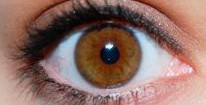January 31, 2016 was a breathtakingly beautiful Winter day. I know it was January 31 because I still have the ski tag on my jacket.
That day I drove to Wilkes-Barre and had lunch with a friend. I was able to read the menu. I was able to navigate the roads.
I left lunch and went to a local ski area where I had a glorious, three-hour session of skiing. The sky was bright blue with not a cloud to be seen. The snow was a glittering white. The air was mild but not mild enough to make ‘spring conditions’ also known as slop.
I wore my sunglasses constantly. Of course I wore my sunglasses. I knew I had macular degeneration and that’s part of the drill. My sunglasses were red and matched my jacket. Even we old ladies with eye problems like to look good on the slopes.
Of course I wore my sunglasses. I knew I had macular degeneration and that’s part of the drill.
Later, my husband insisted it was photostress that destroyed my macula. He believed the day on the slopes and the reflection on the snow was just too much for my eyes to handle. My optometrist and ophthalmologist did not agree but there is that lingering doubt.
A quick detour here to talk about photostress. Photostress is, exactly as the name suggests, the stress that light puts on your eyes. When the photoreceptors make ‘light into sight’, they deplete a chemical, basically a pigment, that has been fed to them by the RPEs. Remember those Servant cells that take care of the photoreceptors? To my understanding, photostress happens when the light is eating up so much pigment that the RPEs cannot keep up replacing it.
If you have ever gone ‘snowblind’ you understand what I’m talking about (although snowblindness is caused by something different).
In the past I have had trouble with photostress. I walked from the car to the building housing a yoga festival. I had forgotten my sunglasses but did not think much of it. I stood in the lobby for five minutes–blind.
There is a photostress test in which they purposely make you go blind and see how long it takes you to recover. It would appear that recovery time is the key variable here.
Recovery time is the key to knowing how serious the photostress is.
If you’re reading this website just because you have nothing better to do or out of curiosity, if you do not yet have a diagnosis of retinal disease and you become blind after coming in from bright light with long periods of recovery, get thyself to a reputable eye doctor. It is very possible you have the beginnings of a retinal disease. That’s the public service announcement.
If you become blind after coming in from bright light with long periods of recovery, get thyself to a reputable doctor.
Written February 2016. Reviewed September 2018.

